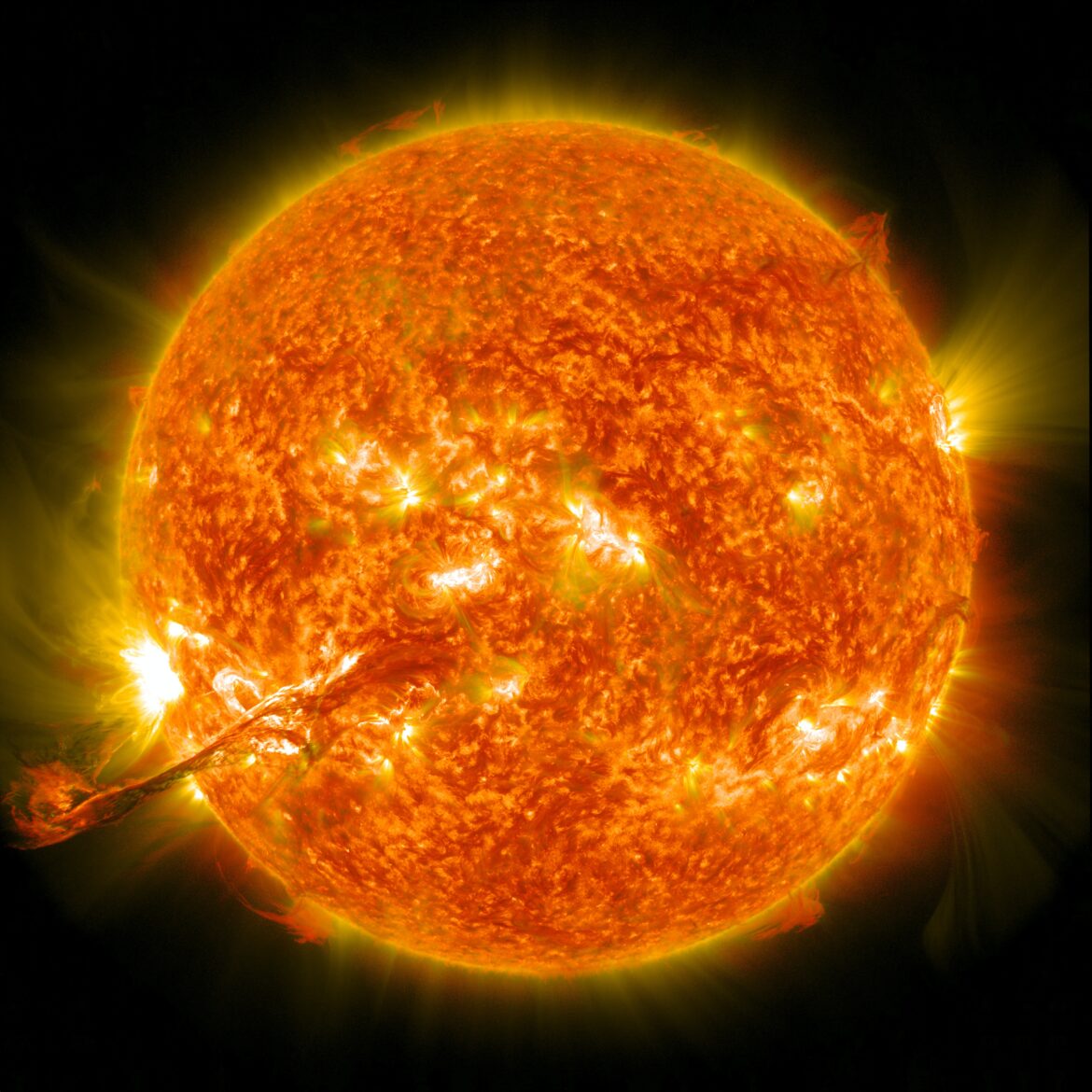Studying the Sun will not only help us better comprehend the area immediately around the Earth, but it may also help us understand other stars in the universe.
With Chandrayaan-3’s safe landing and Chandrayaan-2’s orbitter still rotating around Earth’s sole satellite, the Indian Space Research Organization (ISRO) is literally over the Moon. India became the first nation to successfully land in the area of the Moon’s south pole. Even though it previously had a strong reputation for space research and exploration, ISRO is now recognized as one of the world’s top space agencies.
India is now focusing on the following accomplishment, which is the launch of a spacecraft to investigate the Sun. The goal of the Aditya-L1 mission is to discover the mysteries of the star closest to Earth.
Why even study the Sun?
We are aware that Sun is our source of existence. After the Sun was fully formed, stellar material that was left over gave rise to Earth and the other planets in the Solar System. The Sun is in charge of both creating the Earth and sustaining life. Every one of our energy sources finally connects to the sun.
The Sun plays a crucial role in the Solar System, but it also affects the interstellar medium, which is the incredibly thin space between stars. The heliosheath and heliopause are results of interactions between charged particles emitted by the Sun and the interstellar medium.
Studying the Sun could help us better comprehend other stars in the universe, in addition as providing us with information about our immediate neighborhood around the Earth.

Regarding the Aditya-L1 mission
In Sanskrit, an ancient Indian language, the word “Aditya” literally means the Sun. India’s first space-based mission to study the Sun will be called Aditya-L1. After launch, the spacecraft will be positioned in a halo orbit at the celestial Lagrange point L1. About 1.5 million kilometers separate this location from Earth.
The L1 point offers significant benefits for the placement of the observation spacecraft. The spacecraft will now be able to see the Sun directly, free from any occultation or eclipse. Aditya-L1 will be able to continuously monitor solar activity and how it affects space weather.
Aditya-L1 will be equipped with seven payloads that will use electromagnetic, particle, and magnetic field detectors to study the Sun’s photosphere, chromosphere, and corona, its outermost layer.
The sun continuously releases charged particles. This material will be investigated in-situ by Aditya-L1. According to ISRO, this would “providing important scientific studies of the propagatory effect of solar dynamics in the interplanetary medium.”
ISRO anticipates that the Aditya-L1 payloads will provide us with crucial data that will help us better understand coronal mass ejection, coronal heating, pre-flare, and flare activity, as well as their characteristics.
Additionally, the data will help us better understand particle and field propagation as well as space weather dynamics.
How do Langrange points work?
There are five Lagrange points in space that are located where the gravitational pulls of the Earth, the Sun, and the spacecraft’s orbital motion intersect to produce a stable location. The term “L” points” refers to them. These bear Joseph-Louis Lagrange’s name, an Italian astronomer and mathematician who lived in the 18th century.
The coordinates are L1, L2, L3, L4, and L5.
So what are the goals of the Aditya-L1 mission?
The challenging Aditya-L1 mission aims to investigate:
It intends to research the dynamics of the Sun’s upper atmosphere (chromosphere and corona).
Additionally, the mission will investigate the physics of partially ionized plasma, the onset of coronal mass ejections, and flares.
The mission will look at the in-situ particle and plasma environment to collect data for research on solar particle dynamics.
Aditya-L1 intends to research the solar corona’s physics and heating mechanisms.
ISRO will monitor coronal and coronal loop plasma diagnostics. Temperature, speed, and density are a few of these.
Additionally, the mission will investigate the growth, behavior, and origin of CMEs.
Aditya-L1 will make an effort to pinpoint the order of events that take place at the Sun’s various layers (chromosphere, base, and extended corona). These processes ultimately result in solar eruptions.
Additionally, the structure of the magnetic field and magnetic field measurements in the solar corona will be examined.
Aditya-L1 will monitor and research solar wind’s origin, composition, and dynamics—the drivers of space weather.
How will the trip of Aditya-L1 go?
Aditya-L1 will first be launched by ISRO’s PSLV-C57 rocket into a low earth orbit. The orbit of the spacecraft will thereafter become more elliptical. The spacecraft will be launched toward L1 point using onboard propulsion. The spacecraft will leave the gravitational Sphere of Influence (SOI) of Earth when it approaches L1. The spacecraft will begin its cruise phase after leaving the SOI. Then, it will be positioned in a wide halo orbit near the L1 point. The journey of the spaceship will take four months.



